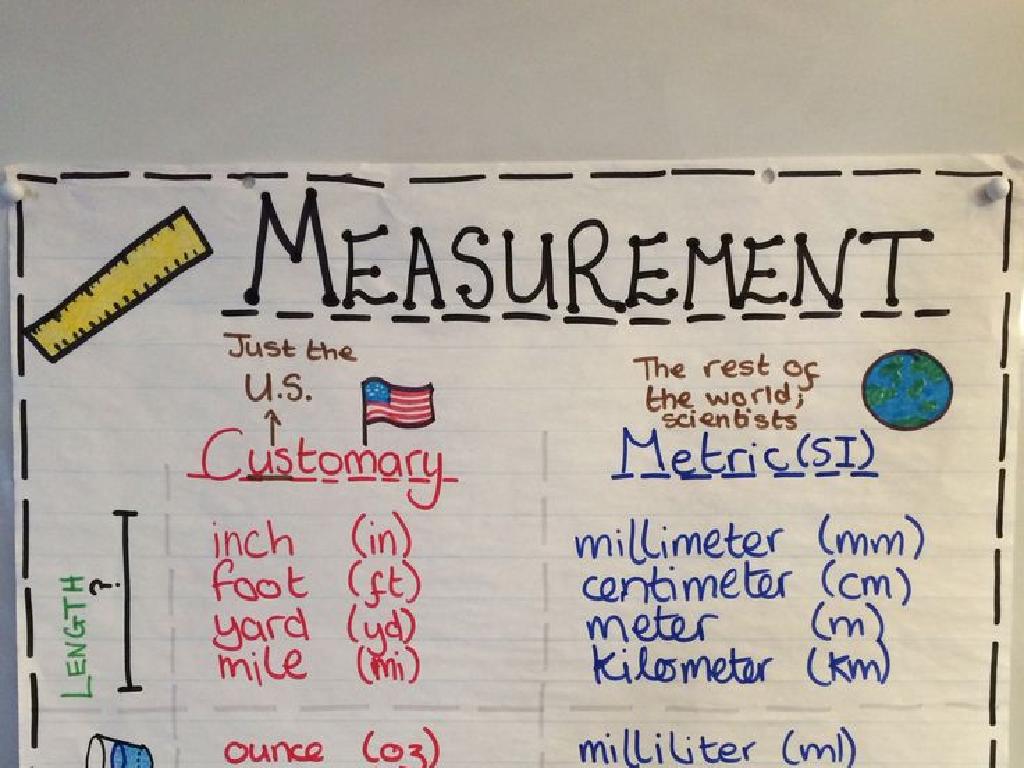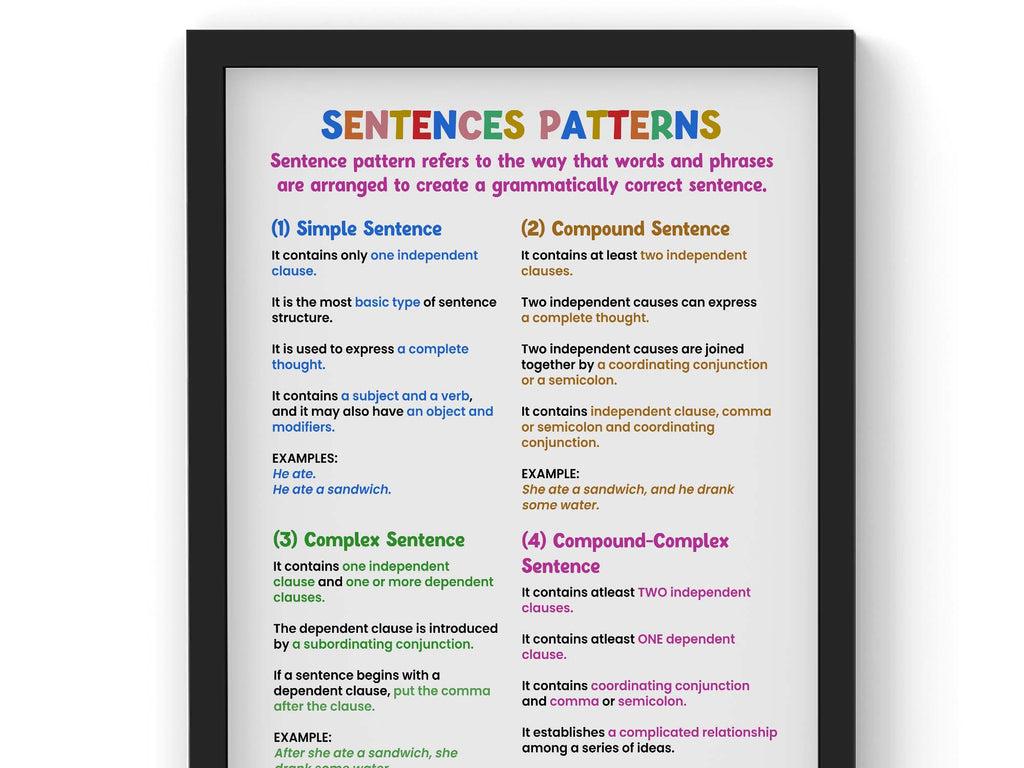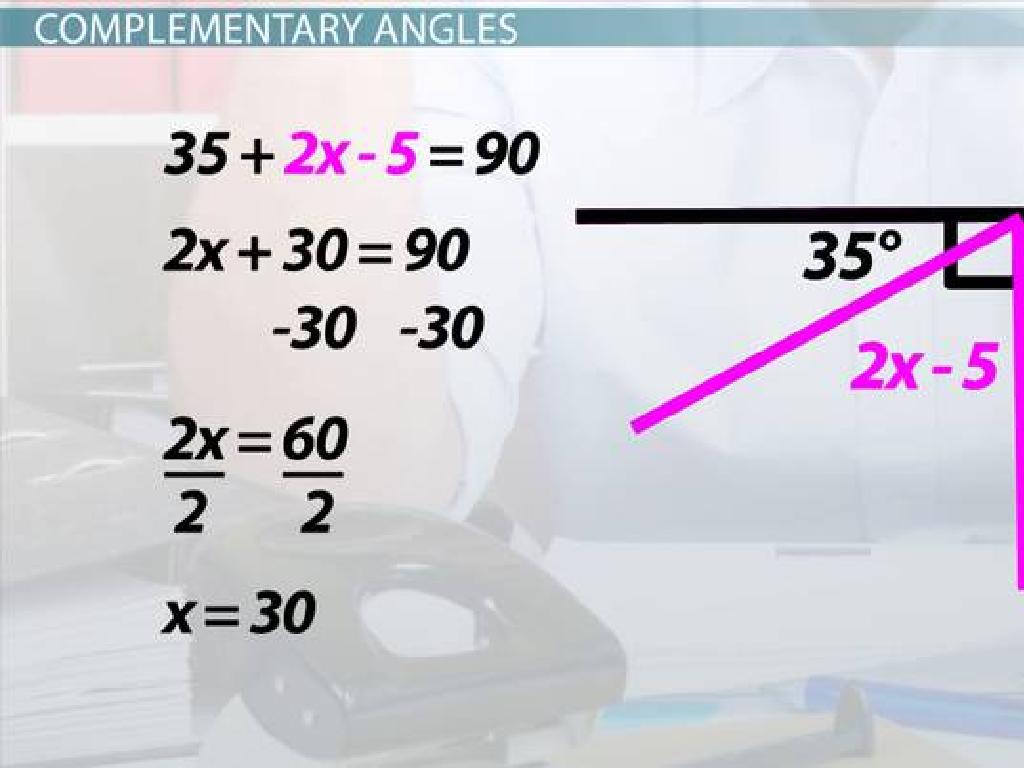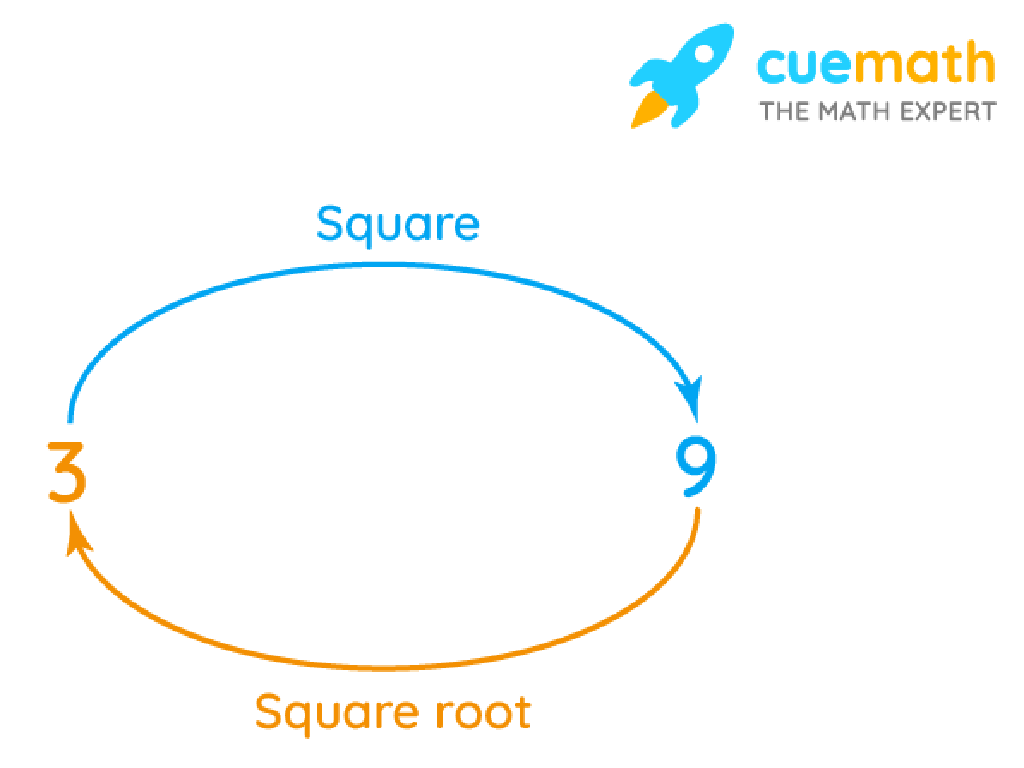Identify Infinitives And Infinitive Phrases
Subject: Language arts
Grade: Seventh grade
Topic: Verb Tense And Mood
Please LOG IN to download the presentation. Access is available to registered users only.
View More Content
Exploring Infinitives and Infinitive Phrases
– Define infinitives in grammar
– An infinitive is the base form of a verb, usually preceded by ‘to’, e.g., ‘to run’, ‘to eat’.
– Explore infinitive phrases
– Infinitive phrases include the infinitive and any complements or modifiers, e.g., ‘to win the race’.
– Infinitives as sentence builders
– Infinitives can be subjects, direct objects, or complement the sentence structure.
– Functions of infinitives in language
– They can act as nouns, adjectives, or adverbs, providing versatility in expression.
|
This slide introduces the concept of infinitives and infinitive phrases, which are key components in understanding verb tense and mood. Infinitives are the most basic form of a verb and are often accompanied by ‘to’. They are versatile and can function in various roles within a sentence, such as subjects, direct objects, or complements. Infinitive phrases expand on the infinitive by adding details. During the lesson, provide examples of infinitives and infinitive phrases in different sentence positions and discuss how they can change the meaning and structure of a sentence. Encourage students to identify infinitives and their functions in sample sentences.
Exploring Infinitives
– Define an infinitive
– The base form of a verb, preceded by ‘to’. E.g., to run, to eat, to be
– Infinitives’ roles in sentences
– Can function as nouns, adjectives, or adverbs within a sentence
– Recognize ‘to’ + verb form
– Always start with ‘to’ followed by the simple form of a verb
– Examples of infinitives
– ‘To laugh’ at a joke (noun), ‘to finish’ first (adverb), ‘to read’ book (adjective)
|
This slide introduces the concept of infinitives to the students. Begin by defining an infinitive as the base form of a verb that is usually preceded by the word ‘to’. Explain that infinitives are versatile and can act as nouns, adjectives, or adverbs in a sentence, which means they can perform the job of naming, describing, or modifying, just like those parts of speech. Provide examples for each role to illustrate how they function within different contexts. Encourage students to identify infinitives in sentences and consider their function. This foundational understanding will help them in identifying infinitive phrases and understanding their use in various sentence structures.
Identifying Infinitives
– Spot ‘to’ plus a verb form
– Infinitives often start with ‘to’ followed by the base form of a verb.
– Examples: to swim, to think
– ‘To swim in the ocean’ or ‘to think before speaking’ show action or state.
– ‘To’ isn’t always an infinitive
– Sometimes ‘to’ is part of a prepositional phrase, not an infinitive.
– Avoid confusing with prepositions
– Prepositional phrases like ‘to the store’ don’t express action.
|
This slide introduces students to the concept of infinitives in the context of verb tense and mood. Infinitives are the basic form of a verb, usually preceded by ‘to’. Provide clear examples to illustrate infinitives, such as ‘to swim’ or ‘to think’. Emphasize that not every ‘to’ is part of an infinitive; it could be a preposition. To help students differentiate, explain that infinitives express potential action or state, while prepositional phrases usually indicate direction or location. Encourage students to practice by identifying infinitives in sentences and distinguishing them from prepositional phrases.
Exploring Infinitive Phrases
– Infinitive phrase components
– Consists of the infinitive and related words
– Example of an infinitive phrase
– ‘to make a sandwich’ is the infinitive; ‘quickly’ is the modifier
– Infinitive phrases structure
– May include subjects, objects, and modifiers
– Infinitive phrases in sentences
– How they function within a sentence
|
This slide introduces students to the concept of infinitive phrases, which are the infinitive form of a verb plus any complements and modifiers. Start by explaining that an infinitive is the basic form of a verb, usually preceded by ‘to’. Then, show how infinitive phrases can expand on this by including modifiers, objects, or even subjects that relate to the action or state of the infinitive. Use the example ‘to make a sandwich quickly’ to illustrate how ‘quickly’ modifies the action of making a sandwich. Discuss how infinitive phrases can act as nouns, adjectives, or adverbs in a sentence, and provide additional examples to solidify understanding. Encourage students to identify infinitive phrases in sentences and consider their function within the sentence structure.
Functions of Infinitives in Sentences
– Infinitives as nouns
– ‘To read’ acts like the subject of the sentence.
– Infinitives as adjectives
– Describes ‘The book’ – which book? The book to read.
– Infinitives as adverbs
– Explains why she went to the store – to buy groceries.
|
This slide aims to teach students about the versatility of infinitives in sentences. An infinitive is the base form of a verb, usually preceded by ‘to’. As a noun, an infinitive can be the subject or object in a sentence, e.g., ‘To read is fun.’ When used as an adjective, it modifies a noun, providing more information about it, e.g., ‘The book to read is on the shelf.’ As an adverb, it modifies a verb, explaining the purpose of the action, e.g., ‘She went to the store to buy groceries.’ Encourage students to create their own sentences using infinitives in different functions to solidify their understanding.
Let’s Practice: Identifying Infinitives
– Find infinitives in examples
– ‘I like to swim.’
– ‘to swim’ is the infinitive, expressing an action
– ‘To be, or not to be: that is the question.’
– ‘to be’ is used twice as an infinitive, showing existence
– ‘She had a suggestion to offer.’
– ‘to offer’ is the infinitive, indicating an action she could take
|
This slide is an interactive class activity designed to help students identify infinitives within sentences. An infinitive is the base form of a verb, often preceded by the word ‘to.’ In these examples, students should recognize the infinitive as the word ‘to’ followed by a verb. For instance, in the sentence ‘I like to swim,’ ‘to swim’ is the infinitive and it expresses an action that the subject likes to do. In the famous Shakespearean line ‘To be, or not to be: that is the question,’ ‘to be’ is used as an infinitive to discuss the concept of existence. Lastly, ‘She had a suggestion to offer’ contains the infinitive ‘to offer,’ which tells us what kind of suggestion she had. Encourage students to explain why each infinitive is used in the sentence and how it contributes to the overall meaning. Provide additional sentences for students to practice independently or in small groups.
Class Activity: Infinitive Hunt
– Pair up and choose reading material
– Find ten infinitives in the text
– Infinitives often start with ‘to’ like ‘to run’, ‘to eat’, ‘to laugh’
– Determine the function of each infinitive
– Is it acting as a noun, adjective, or adverb?
– Prepare to present your findings
|
This activity is designed to help students identify and understand the role of infinitives within sentences. By working in pairs, students can discuss and explore the material together, which reinforces learning. Encourage them to choose a book or article they enjoy to make the activity more engaging. As they find infinitives, they should note whether each is used as a noun (e.g., ‘to run is fun’), an adjective (e.g., ‘The best thing to do’), or an adverb (e.g., ‘He went to the store to buy milk’). During the next class, have each pair share their findings, explaining the function of each infinitive they found. This will help students learn from each other and gain a deeper understanding of how infinitives function in different contexts.
Wrapping Up: Infinitives & Homework
– Review infinitives and phrases
– Homework: Craft ten sentences
– Include infinitives in various sentence positions.
– Use infinitives diversely
– Infinitives as subjects, objects, complements, or modifiers.
– Study for verb tense/mood quiz
|
As we conclude today’s lesson, ensure students have a solid understanding of infinitives and their role within sentences. For homework, they should write ten original sentences, creatively incorporating infinitives in different positions such as subjects, direct objects, subjects complements, or modifiers. This exercise will reinforce their grasp of the material and prepare them for the upcoming quiz on verb tense and mood. Encourage them to study the notes from our lessons and to reach out if they have any questions before the quiz.





